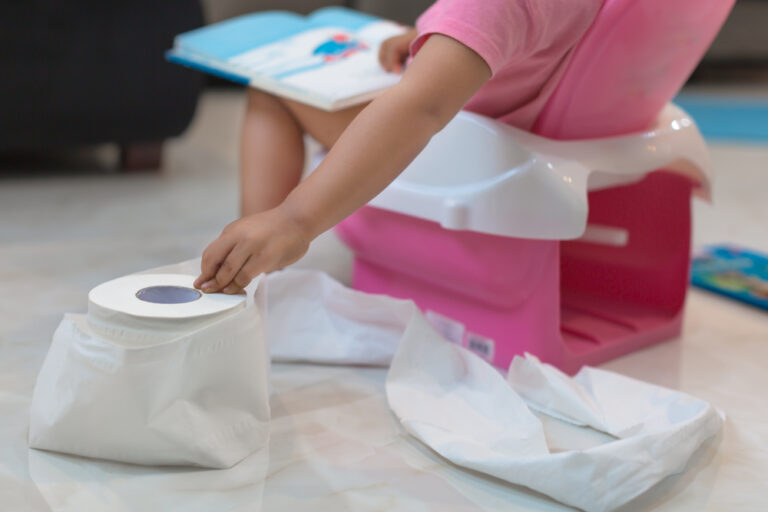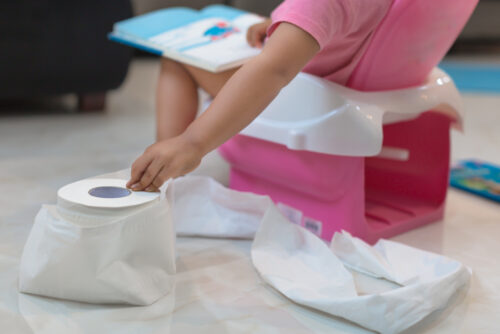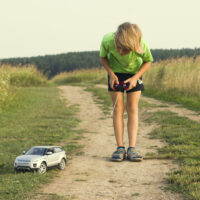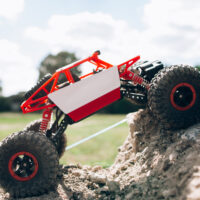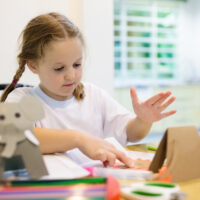Potty training requires a lot of steps, but to us parents, the last step is the most important detail. We have spent at least the last 18 to 36 months wiping their little bottoms! Teaching a child to wipe away the poop themselves is key to finalizing the removal of diapers from our lives!
While this seems like a pretty simple process, how do you teach your child this crucial step without having to deal with a big mess along the way?
7 Easy Steps to Teaching Your Kids To Wipe Their Bottom After Pooping
They made it to the potty! This is a monumental moment for any parent! It is almost time for the diaper bill to end! However, without the knowledge of how to wipe their bottom, you will still have a mess on your hands.
Here is a look at the key details to impart on your potty training pupil to guarantee successful bathroom visits.
#1: Confirm Dexterity
Potty training can start as early as eighteen months, but if your child isn’t ready to take on the full process, it can span for a much longer period of time. A way to test this is with two balloons, a chair, and some toilet paper.
Tape two inflated balloons side by side to the back of a child-size chair. Show them how to reach around behind them and wipe upwards between the “cheeks”. Then let them practice. Once they seem to have the basics down, you can take things a step further, if you so choose, and add some peanut butter to the mix.
If they can manage to clean the balloon tushie without making a colossal mess, they are likely ready to start and finish potty training!
#2: Explain The Wiping Process In Detail
It may seem redundant, but remember that your little one is starting from ground zero. The next step is to verbally explain that they need to take the toilet paper, fold up the squares into a flat surface and then wipe in between their butt cheeks from front to back. Then before discarding it into the toilet, check to make sure that the paper is clean. If the paper is dirty or they don’t feel dry or clean, tell them they repeat the process.
Moreover, reiterate that less is more. We do NOT need to use the whole roll. A good rule of thumb is to pull enough toilet paper to stretch from their wrist to their elbow. Any more than that and they risk clogging the toilet. If this guideline doesn’t seem to work, consider taping a colored piece of paper to the wall to indicate where they are not supposed to pull past.
Finally, explain that they can wipe sitting down or standing up. We want to get clean, so whatever method works best for them is best for everyone! Some kids like to see their handiwork, so letting them check in the mirror that they are good to go can sometimes help!
#3: Play Follow the Leader
Once the general premise is understood, take the lead and then let them follow suit. Once they go poop, you conduct the first wipe. Then ask them to repeat what you did until they are clean.
Always check their bottom when they get done. Skid marks are good for no one! However, as they continue to have successful visits to the potty, let them take the reins!
#4: Reinforce Wiping Front to Back
We want to avoid bacteria going into the wrong places. It is extremely important for every little girl to understand that direction matters. Wiping from front to back ensures that the risk of a urinary tract infection remains low.
This can easily be demonstrated using a doll or stuffed animal. Show them how to wipe and then throughout the potty training period continue to ask them regularly to show you how to do it properly. Keep in mind that practice makes perfect!
#5: Consider an Open Door Policy
If your little girl is struggling with this task, let her tag along with you to the ladies room! The same goes for little boys and their dads! Seeing how it is done and that this activity as a whole is something that everyone does can help to normalize it.
It can also help to lessen the discomfort of your presence when they are going poopy. No one wants an audience for this activity!
#6: Remember That Patience Is a Virtue
On average, potty training takes a minimum of three to six months. Even if your child gets a handle on it early, the nighttime potty training portion can take even longer. Supervision is key to making sure everything goes smoothly.
However, it is important that you don’t rush this activity. The goal is for them to eventually do this all on their own. Therefore, if they skip a step, ask them what they missed and then have them do it correctly.
Furthermore, when they get done wiping their bottom properly, praise their good work! Positive reinforcement is always the best practice. Also, never compare them to other siblings. Everyone masters skills at a different pace.
#7: Watch For Regression Signs
Your child may have had great success in the start, but there is a chance that distraction, stress, or tummy trouble could cause them to take a step backward. Catching these instances early will help you to troubleshoot and not have to worry about starting again from scratch.
Remember to never overreact. Instead, continue with the schedule and reward system that you have in place. Then simultaneously and discretely investigate the issue and fix it accordingly.
Signs that they are not wiping properly include the appearance of skid marks and your child having an itch that doesn’t seem to go away. Fear of missing out is a real problem with many young children and if constipation is keeping them in the restroom for longer than normal, then they will likely skip steps.
If they are having trouble going, consider fiber-filled foods to help move things along! Stick with the P’s for a quick turnaround time — pears, prunes, pumpkin, peaches, and plums are all great remedies. Some families find that probiotics help with regularity, too.
Frequently Asked Questions About Teaching Kids to Wipe
My child can’t seem to get themselves fully clean even though they have mastered wiping. How can I fix this?
Many times it isn’t mastering the skill that is causing the issue. Conversely, it can be the tool that they are using to complete the procedure that is the problem. If toilet paper isn’t doing the trick, consider purchasing flushable wipes to help them to get a bit cleaner.
When using this type of product, or any type of sanitary tissue, remind them that a little should go a long way. If they need extra wipes and the toilet is looking full, tell them to flush first and then discard the remainder of the wipes once the toilet is clear.
How do I motivate my child to complete the entire potty process from going potty to wiping?
It is hard enough to get your little one to go in the potty, let alone making sure that they are actually clean after they get done. If motivation is a struggle, consider a potty reward chart! If they go poopy in the potty they get a star! Then if they wipe themselves clean, they get two more! However, if they play with anything in the potty or don’t wash their hands, they will lose the stars they just earned.
After reaching twenty stars, they can get a prize! This could be a toy, a day at the park, an added story at bedtime that night, or maybe a sweet treat.
Some parents recommend using mini m&m’s or another small candy for each time they have a successful potty experience, but this can become problematic when you are out of the house and don’t have said treat on hand or they don’t particularly want that option on that day. Working towards a goal will not only motivate them but avoid the issue of instant gratification.
Final Thoughts
The potty training process will come with triumphs, struggles, and even potentially a regression or two. Be patient and keep your eye on the prize! Yes, we literally mean prize — think of all the money you are about to save on diapers and wipes!
Until this momentous occasion occurs, be patient, be positive and make sure to stock up on potty training supplies to get your family through this time. This includes pull-ups, a training potty, a stool for the big kid toilet, and flushable wipes for the bigger messes.
Finally, the best method for attaining success is repetition and consistency. Practice every day and keep to a schedule. This doesn’t just include when they go to the bathroom, but also when they eat. Make sure that all family members and caregivers are aware of these stipulations to help avoid setbacks.
